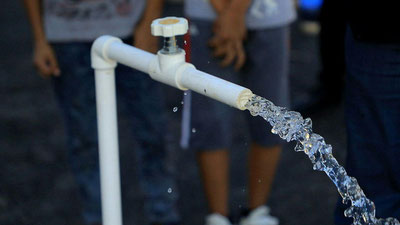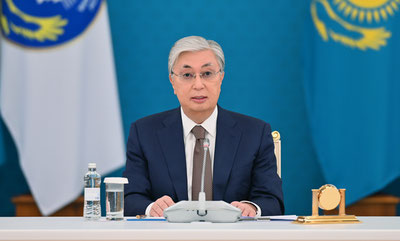“Childlight Global Child Safety Institute” according to the information announced in 2024, more than 300 million children around the world have been victims of online sexual violence and exploitation. This number is at an emergency level and indicates the existence of serious risks in global security, digital technologies, and child protection. In general, 300 million children mean that roughly 1 out of every 3 children (aged 0-17) worldwide has encountered online sexual exploitation or violence at least once in their life. It is worth noting that, according to a UN expert, new forms of online sexual violence and exploitation against children may emerge by 2025, warning of the potential increase.
Today, due to the infinite possibilities of the internet, a “mixing” of world cultures has occurred. As a result, young people with different values and moral standards have come closer in the virtual space, which has created opportunities to promote crimes like pedophilia and increased the risks associated with them. In the West, where sexual freedom and personal rights are prioritized, some cultures might weaken measures against pedophiles in regard to children because significant attention is paid to educating young people in understanding sexual freedom and expressing their own bodies. Meanwhile, in Eastern cultures, great importance is given to protecting children and maintaining moral purity, but threats like the spread of illegal content and online grooming through the Internet are challenging these values.
The vast possibilities of the virtual space are providing pedophiles with new, dangerous ways to commit their crimes in secret, to gain the trust of youngsters, and manipulate them. Social networks created for communication, information exchange, and self-expression among people, such as “Instagram”, “TikTok”, “ВКонтакте”, “Snapchat”, are now being used by some criminals as a tool to abuse children and adolescents. They establish contact with children through fake accounts and subsequently engage in dangerous actions like psychological influence, soliciting intimate materials, or luring them into personal meetings. This reaffirms the seriousness of threats in the virtual environment and the necessity of taking clear, systemic measures for protection.
Additionally, closed groups in messengers like “Telegram”, “WhatsApp” are often used for distributing content related to child exploitation. Due to the vast flow of information on social platforms, violations often go undetected. This benefits the criminals significantly.
Another dangerous area on the Internet is the darknet. These platforms, accessed through the “Tor” browser, are used for distributing illegal content, including materials related to pedophilia. Criminals use VPN and encryption technologies to hide their activities and location, complicating the work of law enforcement agencies.
As evidence of the aforementioned views, a large pedophile network called “Boystown” with more than 400,000 users was uncovered in Germany in 2021. This network had engaged in sexual violence against thousands of children and had continuously distributed pornographic materials of them. This incident shows how darknet (hidden systems) networks play a role in intensifying sexual exploitation of children. According to “Interpol” and “WeProtect Global Alliance” data, instances of sexual exploitation and violence against children on the internet are expanding on a global scale. In 2022, the National Center for Missing & Exploited Children (NCMEC) in the USA recorded over 32 million suspicious materials, marking a 20 percent increase from 2021. Countries in Europe, especially the Netherlands, Slovakia, play a central role in hosting child sexual abuse materials. According to UNICEF's global report, approximately 2 million children might become victims of commercial sexual exploitation annually, a significant part of which is conducted through the internet.
In Uzbekistan, the seriousness of this global problem can be seen in the 2023 “Khorezm case”. The criminal acts against children by officials in the Khorezm region became a subject of wide public discussion. This situation highlighted the necessity to recognize violence against children as a serious issue. Many, including bloggers and activists, demanded to strengthen legislation and implement strict penalties such as chemical castration for pedophiles. The spread of materials related to sexual violence against children on the internet in Uzbekistan is not yet fully controlled, which could potentially exacerbate the situation.
At every moment, millions of children worldwide, including those in Uzbekistan, are actively participating in the internet – in chats, games, and social networks. One of them might be receiving a message written with friendly yet hidden intentions from an unknown person at this very moment. This situation raises serious concerns for parents, teachers, and society. The lack of control over who children are communicating with and the inability to immediately recognize a threat turns the internet into a real danger zone. Every like, comment, or friend request could potentially hide risks. This shows the necessity to further enhance preparedness for child protection.
Combatting pedophilia and crimes against children effectively requires a comprehensive approach in legislation, technology, and education sectors. Nowadays, many countries are taking strict measures against such crimes in the digital environment. For example, the “Online Safety Act” (2023) adopted in the United Kingdom imposes legal liability on internet companies to ensure child safety. Accordingly, if a platform fails to remove harmful content to children in time, it can be subject to significant fines. Large companies like Facebook and Google are using algorithms based on artificial intelligence to detect suspicious content and activities. These systems allow for the analysis of suspicious words, pictures, and activities. However, criminals are also adapting to these technologies by using encryption and other covert methods to complicate the work of law enforcement. Therefore, algorithms and programs in this field need to be constantly improved. Regardless of how important technological measures are, efforts in the field of education are necessary to amplify their impact. Preventing internet dangers through educating children and their parents about proper digital behavior is possible. For this purpose, implementing digital literacy lessons in schools, organizing information campaigns through the media and social networks, and especially educating parents about monitoring their children’s activities are particularly crucial.
In summary, child safety on the internet and social networks is an urgent and pressing issue. Just as technology makes our lives easier, it also opens doors to new hazards. Addressing this problem requires collaborative efforts from countries, IT companies, and community representatives. While preserving internet freedom, mechanisms to protect the most vulnerable group – children, need to be strengthened. Effective combat against these threats can only be achieved through the harmonization of innovations, laws, and collective consciousness. Only then can the digital environment become a safe space for everyone.
Nazim BORONOV,
independent researcher






